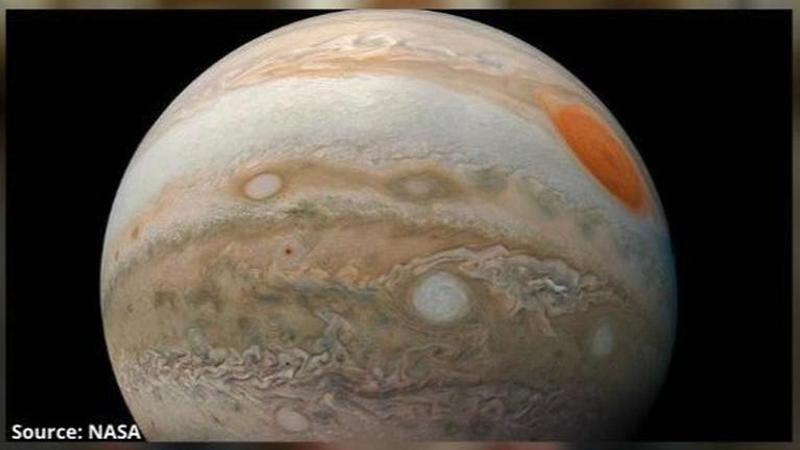Published 20:37 IST, August 14th 2020
Watch Ganymede's shadow & the Great Red Spot cross Jupiter on August 14
On August 14 Jupiter's largest moon Ganymede and its biggest storm The Great Red Spot will cross paths as they travel across the planet. Details inside

Jupiter’s moon Ganymede and its Great Red Spot are two of the planet’s most outstanding features. Ganymede is not any ordinary moon. It is the ninth-largest world in our solar system. In fact, Ganymede is even bigger than the planet Mercury.
The Great Red Spot is a high-pressure region in Jupiter’s atmosphere. It is known for producing the largest anticyclonic storm on the planet. From time to time, Ganymede has cast a shadow on Jupiter. However, this weekend, both Ganymede and the Great Red Spot of Jupiter will be crossing paths with one another. Read on to know more details about this celestial phenomenon.
Source: NASA
What time will Ganymede's shadow & the Great Red Spot cross Jupiter?
According to a report on Space.com, Ganymede's colossal shadow and the Great Red Spot will be travelling across Jupiter's northern and southern hemispheres, respectively. This event is set to occur on the evening of Friday, Aug. 14 and will also continue in the wee hour of Saturday, Aug. 15. The Space.com report suggests that this stellar event will commence a few minutes after midnight on Friday, and will be visible to observers in both North and South America.
Source: NASA
This event of double shadow transit is a very rare occurrence. The astronomical event will begin at 12:06 a.m. EDT or 04:06 GMT. Io which is Jupiter’s third-largest moon will also join the show, as its small shadow will appear alongside Ganymede's larger shadow. The Great Red Spot will already be progressing across Jupiter's northern and southern hemispheres. This heavenly trio will remain visible until Ganymede's shadow and the Great Red Spot will move off Jupiter at about 1:53 a.m. EDT or 05:53 GMT. However, Io’s shadow will complete its transit at approximately 2:25 a.m. EDT or 06:25 GMT.
How big is Ganymede?
Jupiter’s Giant Moon Ganymede was discovered in 1610 by the Italian astronomer Galileo. It has a diameter of 5,268 km or 3,273 mi. This makes it 26 per cent larger than the planet Mercury by volume. The core of this colossal moon is a metallic one. Ganymede is also the only moon known to have a magnetic field.
How big is the Great Red Spot?
Jupiter’s Great Red Spot rotates anticlockwise and takes up to six Earth days or fourteen Jovian days to complete one round of the planet's atmosphere. It measures at 16,350 km or 10,160 miles in width. The Great Red Spot is 1.3 times the diameter of Earth. The cloud-tops of this storm are 8 km or 5 miles wide.
Updated 20:38 IST, August 14th 2020





